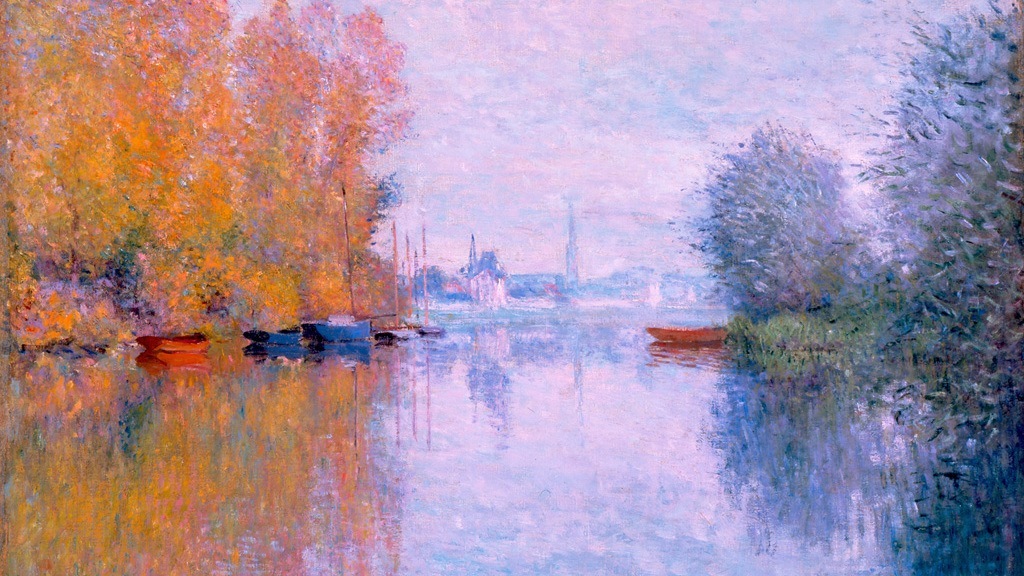As a composer, Maurice Ravel was drawn to the waltz. For example, consider the hazy serenity of the second movement of Ravel’s Piano Concerto in G Major, or (most famously) La valse, the composer’s haunting, dreamlike remembrance of the Viennese waltz, as heard through a perfumed French filter. Around 1920 while writing La valse, Ravel described his fascination with the waltz to the musicologist and writer Jean Marnold:
You know my intense attraction to these wonderful rhythms and that I value the joie de vivre expressed in the dance much more deeply than Franckist puritanism.
La valse‘s predecessor was Ravel’s 1911 suite, Valses nobles et sentimentales, originally written for solo piano and orchestrated the following year. Listening to the piano version, the work’s adventurous harmony becomes particularly striking. (Notice these wild, jazz influenced chords not even a minute in). Perhaps passages like this led to the “chorus of boos and cat calls” which met the work’s premiere by pianist Louis Aubert on May 9, 1911. At the concert, organized by the Société Musicale Indépendante, the composers names were withheld and the audience was invited to guess each work’s authorship. (Debussy correctly identified Ravel as the composer). The French poet, musician, and artist Tristan Klingsor was one of a handful of audience members who
were immediately seduced by the music, and yet he had taken a lot of risks, at least for the period….He had taken the use of unresolved dissonances to its furthest point. What we now find very piquant was extremely daring at the time. The first bars of the Valses seemed quite extraordinary. Then, since there was nothing there that was not well thought-out, the ear quickly grew to enjoy these pseudo-‘wrong notes,’ and a glance at the score revealed that they had a proper harmonic justification.
The title pays homage to Schubert who, in 1823, compiled two waltz collections for piano entitled Valses nobles and Valses sentimentales. As with Ravel’s Le Tombeau de Couperin, the music contains no overt references to Schubert. While Schubert’s Waltzes are independent, separated pieces, the eight waltzes of Ravel’s Valses nobles et sentimentales flow together in an uninterrupted dreamscape. The quote from Henri de Régnier which Ravel inscribed on the title page gives us a sense of the atmosphere of the music:
Le plaisir délicieux et toujours nouveau d’une occupation inutile (the delicious and ever-new pleasure of a useless occupation).
From its opening bars, the orchestral version of Valses nobles et sentimentales pulls us into a world of shimmering color and swirling motion. This is music which almost certainly influenced the mysterious, darkly-veiled waltzes of Stephen Sondheim’s A Little Night Music. At moments, the music seems to lift us off our feet. Childlike innocence and elegant frivolity abound. As the Epilogue fades away, all of this intoxicating magic dissolves into a quiet, haunting sadness.
A motive from Valses nobles et sentimentales found its way into Ravel’s La valse. Started around 1906, the work was originally conceived as a ballet for Sergei Diaghilev. Diaghilev called it a “masterpiece,” but rejected it as, “not a ballet. It’s a portrait of ballet.” Indeed, La valse unfolds with a swirling, larger-than-life power which seems to stand on its own. This is music full of ghosts- the echoes of a vanished world. The English composer George Benjamin heard La valse in the context of disintegrating European society following the First World War saying,
Whether or not it was intended as a metaphor for the predicament of European civilization in the aftermath of the Great War, its one-movement design plots the birth, decay and destruction of a musical genre: the waltz.
Ravel rejected this literal interpretation:
While some discover an attempt at parody, indeed caricature, others categorically see a tragic allusion in it – the end of the Second Empire, the situation in Vienna after the war, etc… This dance may seem tragic, like any other emotion… pushed to the extreme. But one should only see in it what the music expresses: an ascending progression of sonority, to which the stage comes along to add light and movement.
This is how we should approach La valse- as an exhilarating, mysterious, and haunting drama acted out by a myriad of colorful voices…a glittering combination of exuberance and nostalgia.
Recordings
- Ravel: Valses nobles et sentimentales, London Symphony Orchestra, Claudio Abbado Amazon
- Ravel: Valses nobles et sentimentales (original solo piano version), Louis Lortie Amazon
- Ravel: La valse, Berlin Philharmonic Pierre Boulez Amazon
Photograph: “Autumn on the Seine,” Claude Monet, 1873


I cant say enough about your analysis of Ravel’s approach to the waltz form here, and what this orchestration does to further the piano version I’m so familiar with. Thank you